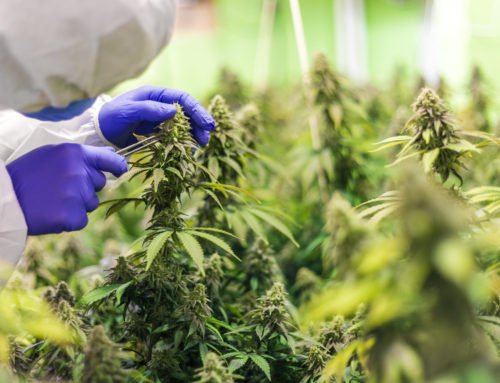After a failure to meet regulatory compliance laws, Canadian cannabis giant CannTrust is now being investigated by Health Canada. The company could lose their license and their business. For cannabis growers that heed the CannTrust incident as a warning of their own compliance vulnerabilities, the message is simple: you have to keep your house in order.
That means you have to implement Standard Operating Procedures (SOPs) that ensure you meet regulatory standards, maintain accurate and permanent record-keeping as proof of your compliance, and set plans in place to automatically remedy any regulatory inadequacies before they jeopardize your business. Those things are all easier said than done, but they are mandatory for any farmer who can’t afford to forfeit profit in such a low-margin, high-risk industry.
Our CEO Allison Kopf was on BNN Bloomberg earlier this month to explain the solution to this kind of industry challenge. “Link up your data, trace it through the supply chain and make sure you’re following regulations. It’s not that difficult of a problem to solve, you just have to commit to doing it and invest in doing it.”
Despite a maze of changing laws across state lines and international borders, regulatory compliance is a responsibility every grower must take seriously in order to protect their people, their plants, and their business.
Don’t know where to begin? Start with these three steps:
1. Make regulatory compliance a core component of your company culture.
A commitment to compliance has to start from the top. When leadership takes accountability seriously, the rest of the company will too. Owners, managers, and employees have to work together to ensure compliance along the entire supply chain. It’s not a one-person job.
Make sure your team knows what’s expected of them. Everyone should understand how they are accountable for their part in maintaining process control and product standards across your facility. Clear protocols and task management can both prevent and rectify a lapse in compliance.
Governance plays an important role in influencing growers to prioritize compliance throughout production, but if you want buy-in from your team, you need to work directly with your front line to ensure they don’t just understand the “how” of participation, they also appreciate the “why.” Respecting your staff enough to educate them reduces the likelihood that they will accidentally expose your business to loss.
2. Audit your operation.
Internal audits provide a comprehensive overview of your regulatory compliance weaknesses. Think of it as a checkup for your supply chain. You can audit your own operation or work with a third-party to conduct a mock audit for you; either way, you’re going to get valuable insight into where you need to tighten up SOPs, data security, and workplace hazard mitigation.
Use your audit as a way to implement programs that ensure plant traceability and task accountability. Use it as an opportunity to add value to your team through training, and to your investment by fortifying your facility. If you have a plan in place, you won’t find yourself scrambling for resources in case of a recall. You might even find yourself correcting situations before they become a problem.
Responsible food and pharmaceutical businesses understand that self-auditing, third-party review, and a strong, documented compliance system are critical to their success. In many cases, they cannot operate without them. Cannabis entrepreneurs must embrace the opportunity to demonstrate their willingness to evaluate and monitor their operations with safety and security in mind. Preemptive risk management is a good business strategy and leadership opportunity.
Conduct a financial audit, a security audit, and an inventory audit. Don’t leave anything to chance.
3. Digitize your regulatory compliance paperwork.
If you run your farm on pen and paper, whiteboards and Excel, securing and organizing your records in the event of an audit or an emergency takes a lot of time away from the rest of your business. Electronic storage insures your traceability in the face of fire, flood, or other potential hazards, and can be as simple as taking photographs and adding them to a secure storage bank.
A scramble to demonstrate accountability and compliance can be costly. Not just in labor hours devoted to preparing documentation, but in work postponed while your team is in response-mode, productivity lost from the stress of dealing with regulators or auditors under pressure, and the emotional labor of embarrassment when you discover that you aren’t prepared.
Digital compliance and task management can consolidate all of your information into a readily-accessible place, where employees can access training, procedures, and activities as soon as you need them to. Electronic record-keeping systems can track their progress through your compliance program, and when it’s time to demonstrate that you and your staff understand how to use it, the training logs are waiting there for you.
Agriculture is already full of risks you can’t control. Protect your most important permits, licenses, and production records, so you aren’t leaving your business open to unnecessary ones.






Leave A Comment